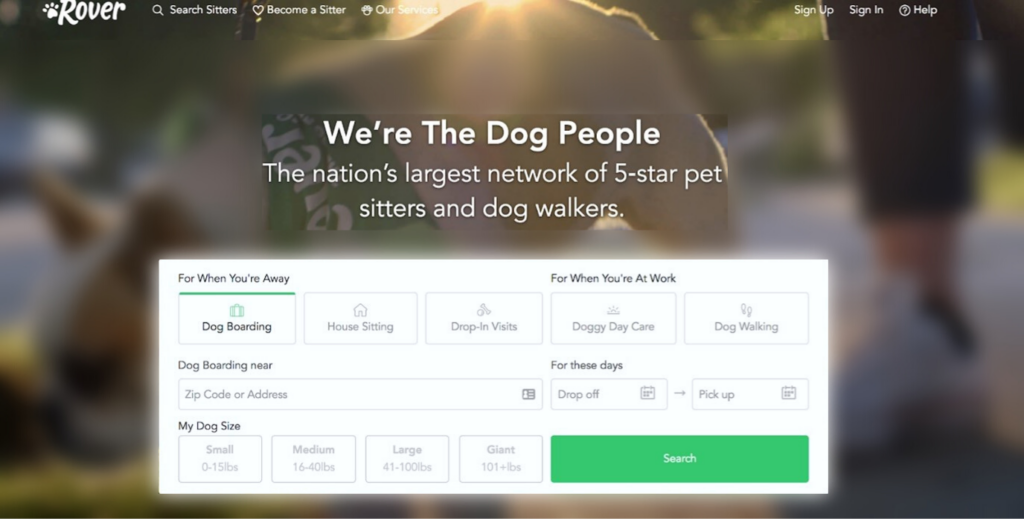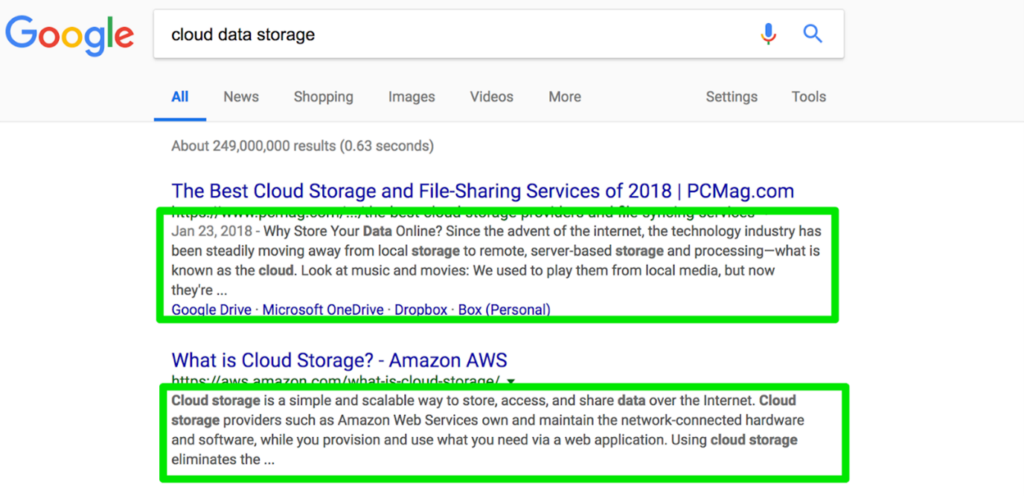Top 8 Google Ranking Factors
If you want to get better rank in search engine results and make good SEO, there are many factors you should consider. Google Ranking Factors: Fact or Fiction, Search Engine Journal has claimed more than 80 ranking factors. In this tutorial we’re going to discuss about top 8 factors among them. They are not in order.
- High-quality content.
- Mobile-first.
- Page Experience.
- Page speed
- On-page optimization.
- Internal links.
- External links.
1. Publish High-Quality Content
The most important ranking factor is high quality content. Without a quality content, your website or blog can never get better rank. Creating a high quality content means you need to provide helpful content for the users and your pages should increase time on page and lower bounce rate. If you create page without real value, it can haunt you. Even big brands like eBay and Apple have faced this problem in past years.
Writing long-form and well is not enough for make your content quality. You need to write them according to SEO factors. They also consider following factors to increase your presence in SERPs.
RankBrain
This machine learning system helps Google to understand the intent of the search query. If you wanna create a page that drives organic traffic, understanding user’s intent is essential. If you create your page according to the SEO strategies with user intent, it will increase traffic for sure. You can use Google Analytics to see what are the queries users use to search something related to your post. You can get more idea about this by report like User Flow Site Search. The Performance report in Google Search Console also gives you more details.
Keyword Usage
Keywords are important for the quality content creation. You can find keywords that have average search volume through data mining and competitor research. Chris Hornack, the founder of Blog Hands, have identified 80% increase in traffic after he performing keyword research. Now you can get a idea how much it is important.
You need to make your keyword strategy for the mobile consumers also. Because a Google study has found that mobile search queries like [brands] and [stores] have increased by 60% in the last two years. Doing keyword research for individual keywords is not trend anymore. You can bucket keyword topics into the themes instead. You can use long-tail keywords, synonyms and long tail keywords that related to your topic or similar topics.
Freshness
Your content needs to be fresh. Google said what is fresh content and how does it work with freshness on their first announcement in 2011. Updating the date in every year doesn’t make your content fresh. There are many things in page that needs to be updated. For example, if you make a list of tools, you need to update the screenshots, their pricing, and information that attached to each tool when time goes on. Just perform quarterly content audits and identify what pieces should refresh and others pieces that could be redirected into the similar pages. Your data will help you to make smarter decisions.
2. Make Your Site Mobile-First
Mobile-First indexing used to be a a long and slow process since it was kicked off in 2017. It was finalized in March 2021. This is the way that Google indexes your site. Imagine you have got a separate mobile website. Then your mobile site’s URL will be indexed and it will be used for ranking instead of desktop version. But there is not a separate mobile-first indexing. Therefore Google will index and rank your content that comes from the mobile version of the site.
Mobile Usability
Many websites are moving away from mobile website method. They are going toward building responsive websites. Google has said their recommended format is a responsive websites in ranking. They don’t consider mobile websites. It doesn’t matter whether they are dynamic, responsive or they have separate URLs. According to Google, responsive design helps their algorithms correctly assign indexing properties to the page than needing to signal the existence of corresponding mobile or desktop pages.
In the era of mobile-first indexing, your existence’s lifeblood in the SERPs is your mobile website. To stay alive, follow Google’s guidelines and make sure your content is equally relevant on desktop and mobile. Although mobile-first indexing doesn’t need mobile-friendly layouts, you should optimize it for a better on-page experience and rankings. Whenever you can improve search engine results, do it!
3. Enhance Page Experience
Improve Your User Experience
User experience (UX) affects on SEO. If you don’t create your page as a way user can get better experience, it will end up in the metaphorical trash. People are not like to engage with pages their layout or content are not attractive. More than 38% people are like that. For example, Main Street Host is a digital marketing agency. They updated the content of their attorney profiles and add call-to-action buttons. It increased their page views by 66%. Rover is another good example for user experience.

Site Architecture
If you wanna give better user experience, you need to think about site architecture. It has a impact on SEO also. Once John Doherty of Credo switched the URLs from a tag page to a subcategory page and link higher in the site architecture. As a result organic sessions increased by 74% and pages per session increased by 41%. An example for proper site architecture is given below.

Site architecture gives you many benefits. Users can find what they want with better website navigation. Search engine crawlers can find more pages on your website also. You need to create all pages an navigation in a simple way. Users must be able to find any page on your website within three or four clicks. It must be hard in large sites. As long as you do it, it will give you more benefits.
Core Web Vitals
It is more than a tie-breaker and it impacts on many factors that related to SEO like usability. This metric has created to help you give a better experience for the users.
Create a Secure Website (HTTPS)
According to Dr. Pete J. Meyers, 30% of page on Google results were used HTTPS. If you don’t want to switch to HTTPS, then it’s OK. It won’t necessarily harm the website. But if you do it, it will give you many benefits. Though it wouldn’t impact on SEO much, it’s worthy to do it.
Google announced HTTPS as a ranking signal in 2014 at first time. Since then, they made several changes. More than 45% people use chrome. Google announced in 2017, if sites that don’t use HTTPS in their URL bar are not secure. Google announced in their last warning, if you don’t make this change, you will see a rise in bounce rates. Which means now Google thinks HTTPS is a essential thing. When you implement HTTPS, it’ll look like below image.

But keep remember, it you don’t do this switching process correctly, it’d give your site many issues.
Ad Experience
Chrome impacts website owners for running ads. If you are in violation of Better Ads Standards, then Chrome can remove all advertisements from your website. Ad experience is impacted by the user experience and how the user engage with your website. Therefore it is tied with Core Web Vitals and page experience.
4. Optimize Your Page Speed
If your pages take more time to load, you will lose more visitors. For example, a British publication called Telegraph have found 11.02% of reduction of views because of a four second delay. Fast loading pages gives better website experience also.
Page speed used to be a desktop-only ranking factor. Since 2018, it became a Google mobile ranking factor also. There are many tools to check website’s average page speed. Don’t get a risk just check it out.
5. Master Your On-Page Optimization
On-Page Optimization is one of important ranking factor. It impact on SERP position for your target keywords and website’s visibility. For examples, Mockingbird has found a 62% increase in organic traffic by updating H1 tags. Brand New Copy once cleaned up metadata and internal linking structure. It increased their organic traffic by 48%. Optimizing your website can help it get found faster by not only search engines but also users.
Metadata
Metadata is the details about your sites which users see in the SERPs like title tag and page descriptions. Sometimes Google get some information from your content that matches with user query and show them description in SERPs. Look at below example and get some idea how it is looks like.

You can write the best page titles and descriptions for your pages, but there’s no guarantee that they will be shown always. Title tag and description are not only meta tags. There are many more. Making simple changes in those tags can increase in Clicks from Google Discover by 300%.
Schema markup
It is a hidden component of any website. Schema markup tells Google more information about your site. It makes easier search engines to get better understanding about your content. There are about 600 types of information that can be included to schema. Schema for a local business is looks like below example.
<!-- FOOTER --> <div class="footer left"> <div class="footer-top left"></div><!--/footer-top--> <div class="wrapper"> <div class="footer-widgets-content left"> <div class="footer_box left"> <div class="footer-widget-holder"><h2>Get to Know Us!</h2> <div class="textwidget"><div itemscope itemtype="http://schema.org/LocalBusiness"> <a itemprop="url" href="http://www.toybraryaustin.com"><div itemprop="name"><strong>Toybrary Austin, TX</strong></div> </a> <div itemprop="description">The Toybrary is a toy lending library and kids' birthday party venue that also offers drop-in childcare in Austin, TX</div> <div itemprop="address" itemscope itemtype="http://schema.org/PostalAddress"> <span itemprop="streetAddress">2001 Justin Lane</span><br> <span itemprop="addressLocality">Austin, </span> <span itemprop="addressRegion">TX </span> <span itemprop="postalCode">78757</span> <span itemprop="addressCountry"> USA</span><br> <span itemprop="telephone">5127654174</ span> </div> </div></div> </div> </div><!--/footer-widget-->
If you wanna know how schema works and how rich results help increase clicks online, check Andrew Valente session of “How to Stand Out in Search With Structured Data” at Google I/O.
Making schema markup is an important part of the SEO. For examples, Rotten Tomatoes has identified 25% higher click-through rate on their pages with markup. And also the Food Network has identified 35% increase in visits for their recipes with schema markup.
Featured Snippets
Also called as coveted Position 0. It a snippet of content that from the page’s copy. It served in the search results. If you want to rank for the featured snippet, understanding the search intent behind the query and RankBrain is essential. If your content give more value to the search intent behind the query, Google or any other search engines will use your content in the featured snippet.

Google Discover
This is a content-related SEO factor also. You can check out Google Search Console report and see your currently ranking in the Google Discover.

6. Internal Link Structure
This ranking factor helps users and search engines to find pages. It can be categorized into five different areas.
- Helping users.
- Managing link flow
- Building a roadmap around the specific content topics.
- Canonicals.
- Prioritizing indexing of the particular pages.
First of all you strategy of linking to different pages needs to be user-centered. Then you can focus on driving traffic to a fundamental pages.
7. Earn Relevant & Authoritative Links
If you wanna get better rank in SERPs, links will help you to make SEO. It is a leading SEO component. Some website have got better ranking without inbound links. But don’t be risky. It’d be silly if you don’t use any link building strategies. There are many link building opportunities are available. Get some idea and use them.
8. Local
Local can be categorized into three ranking factors.

- Relevance: Relevance connects your business to the search query. It is the lifeblood of Google’s local algorithm. Business listings such as Bing Places listings,
Google My Business get details like name, phone number, address and other attributes that related with your business. It’s your duty to give them all business information. Then Google will better understand your business. - Distance: Which means physical distance between searcher and your business. If your business is closer to the searcher, then location might appear in the local map results. Search queries with “near me” term comes in here.

- Prominence: It is based on the information of business that Google has like links, articles, and directories.
If you use above ranking factors correctly, you will be able to get better rank in search engine results and also make good SEO. There are many more factors are available than them. We only discussed about main top 8 ranking factors among them.
Related Posts


